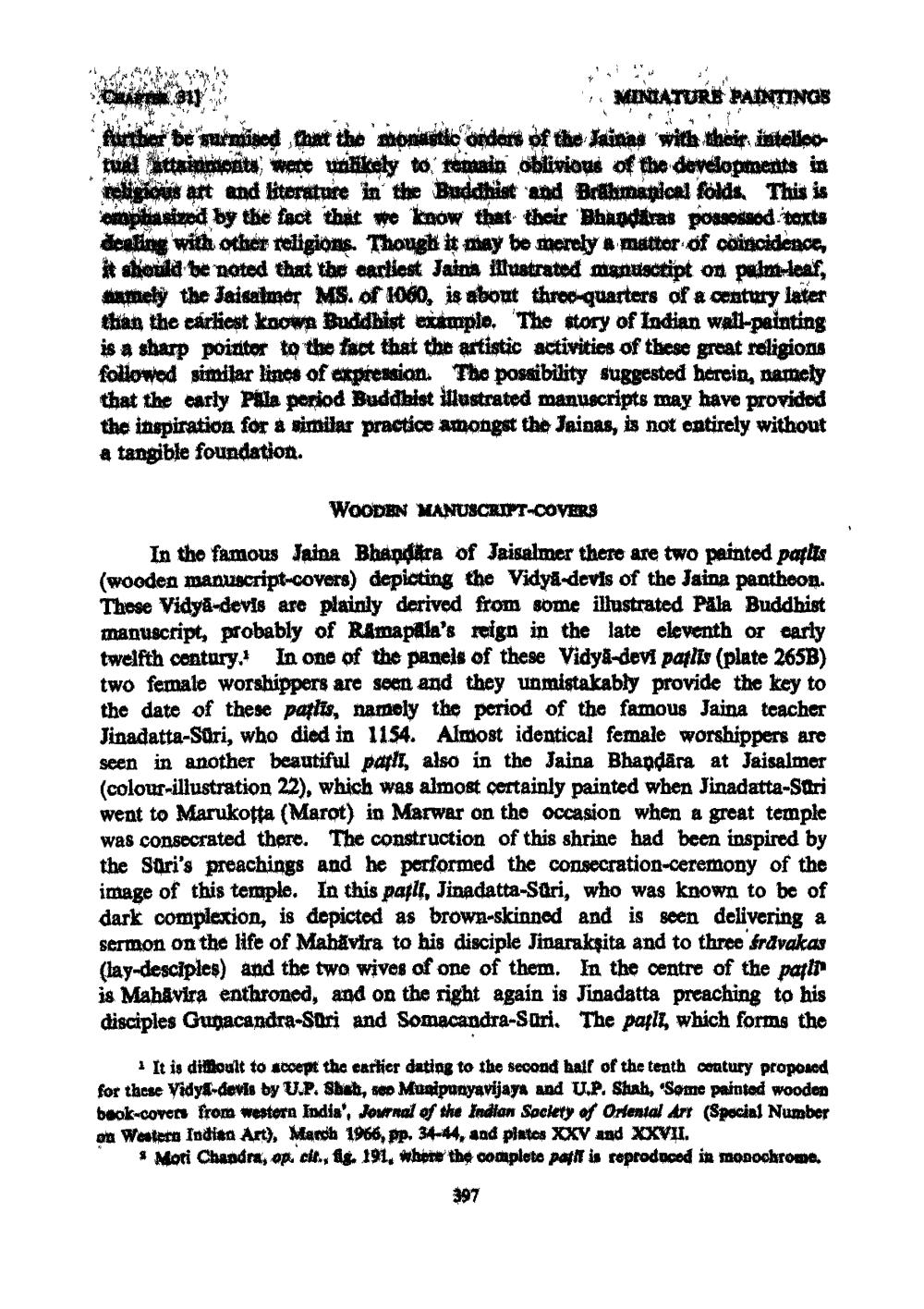________________
MINIATURE PAINTINGS further be surmised that the monastic orders of the Jainas with their intelleotual attainments were unlikely to remain oblivious of the developments in
ligious art and literature in the Buddhist and Brahmanical folds. This is emphasized by the fact that we know that their Bhandaras possessed texts dealing with other religions. Though it may be merely a matter of coincidence, it should be noted that the earliest Jaina illustrated manuscript on palm-leaf, namely the Jaisalmer MS. of 1060, is about three-quarters of a century later than the earliest known Buddhist example. The story of Indian wall-painting is a sharp pointer to the fact that the artistic activities of these great religions followed similar lines of expression. The possibility suggested herein, namely that the early Pála period Buddhist illustrated manuscripts may have provided the inspiration for a similar practice amongst the Jainas, is not entirely without a tangible foundation.
WOODEN MANUSCRIPT-COVERS
In the famous Jaina Bhandara of Jaisalmer there are two painted pațiis (wooden manuscript-covers) depicting the Vidya-devis of the Jaina pantheon. These Vidya-devis are plainly derived from some illustrated Päla Buddhist manuscript, probably of Ramapala's reign in the late eleventh or early twelfth century. In one of the panels of these Vidya-devi patlis (plate 265B) two female worshippers are seen and they unmistakably provide the key to the date of these patlis, namely the period of the famous Jaina teacher Jinadatta-Suri, who died in 1154. Almost identical female worshippers are seen in another beautiful patli, also in the Jaina Bhandara at Jaisalmer (colour-illustration 22), which was almost certainly painted when Jinadatta-Stri went to Marukotta (Marot) in Marwar on the occasion when a great temple was consecrated there. The construction of this shrine had been inspired by the Suri's preachings and he performed the consecration-ceremony of the image of this temple. In this pali, Jinadatta-Süri, who was known to be of dark complexion, is depicted as brown-skinned and is seen delivering a sermon on the life of Mahavira to his disciple Jinarakşita and to three śravakas (lay-desciples) and the two wives of one of them. In the centre of the patli is Mahavira enthroned, and on the right again is Jinadatta preaching to his disciples Gunacandra-Sari and Somacandra-Suri. The patli, which forms the
1 It is difficult to accept the earlier dating to the second half of the tenth century proposed for these Vidya-devis by U.P. Shah, see Munipunyavijays and U.P. Shah, 'Some painted wooden book-covers from western India', Journal of the Indian Society of Oriental Art (Special Number on Western Indian Art), March 1966, pp. 34-44, and plates XXV and XXVII.
* Mori Chandra, op. cit., fig. 191, where the complete paff is reproduced in monochrome.
397




